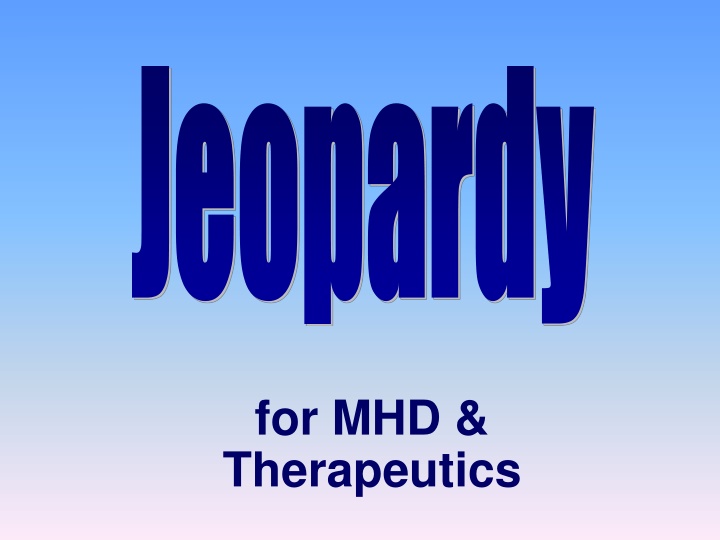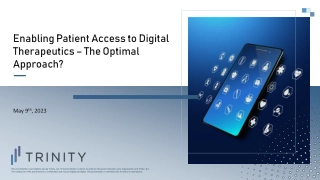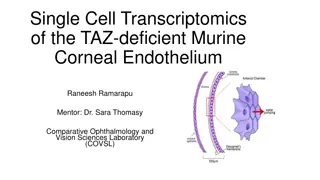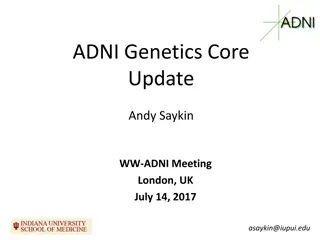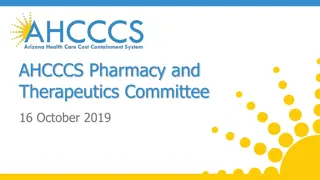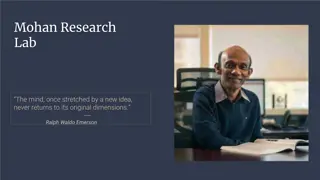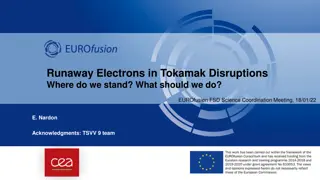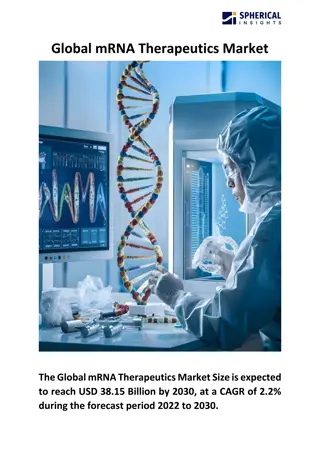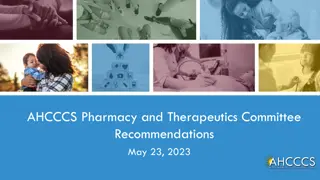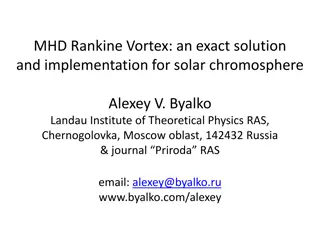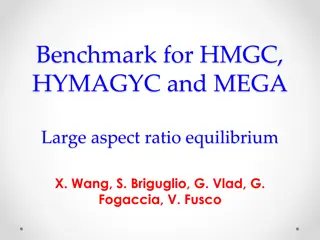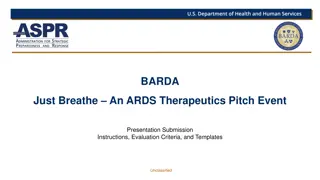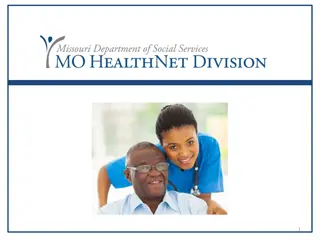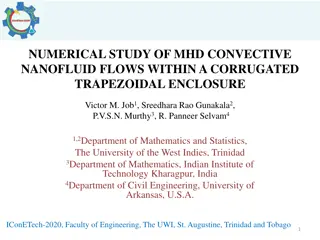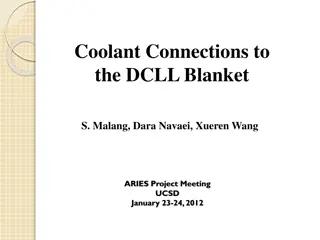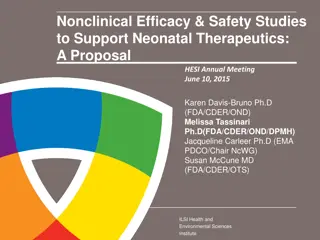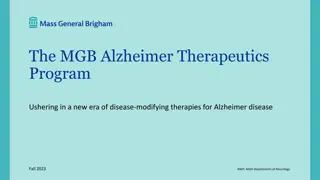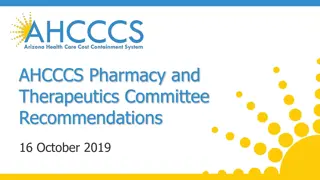for MHD & Therapeutics
"Join us for an engaging Jeopardy session focusing on Mental Health Disorders and Therapeutics hosted by Dr. Schilling. Explore categories like Dopamine System, FGAs, SGAs, Side Effects, and more! Test your knowledge on topics such as dopamine tracts, antipsychotic effects, and associated side effects. Challenge yourself with questions ranging from basic concepts to in-depth understanding of neuropharmacology and treatment modalities in mental health."
Download Presentation

Please find below an Image/Link to download the presentation.
The content on the website is provided AS IS for your information and personal use only. It may not be sold, licensed, or shared on other websites without obtaining consent from the author.If you encounter any issues during the download, it is possible that the publisher has removed the file from their server.
You are allowed to download the files provided on this website for personal or commercial use, subject to the condition that they are used lawfully. All files are the property of their respective owners.
The content on the website is provided AS IS for your information and personal use only. It may not be sold, licensed, or shared on other websites without obtaining consent from the author.
E N D
Presentation Transcript
Jeopardy Jeopardy for MHD & Therapeutics
And Now Here Is The Host . . . is proud to present Dr. Schilling
The categories for todays Jeopardy will be:
Dopamine FGA s Side Effects SGA s Miscellaneous 100 100 100 100 100 200 200 200 200 200 300 300 300 300 300 400 400 400 400 400 500 500 500 500 500 600 600 600 600 600 700 700 700 700 700 800 800 800 800 800 900 900 900 900 900
What is mesolimbic? Antipsychotic medications exert their antipsychotic effects at this dopamine tract Row 1, Col 1
What is nigrostriatal? EPS and Tardive Dyskinesia result from excessive D2 blockade of this tract 1,2
What is 60-65%? The percentage of D2 occupancy necessary for an antipsychotic effect is this 1,3
What is tuberoinfundibular? Infertility, galactorrhea, and osteopenia may result from excessive blockade of this dopamine tract 1,4
What is nothing? Blocking 60-65% of receptors in the nigrostriatal tract will result in this 1,5
What is tuberoinfundibular? An increased prolactin level is caused from excessive D2 blockade of this tract 1,6
What is 80%? The percentage of D2 occupancy associated with elevated prolactin and/or EPS is this 1,7
What is acetylcholine? Normally suppressed by dopamine, this neurotransmitter, when blocked, will treat some EPS side effects 1,8
What is antipsychotic effect? Blocking > 80% of D2 receptors in the mesolimbic tract will result in this 1,9
What is low potency and high potency? Correlating with their D2receptor s binding affinity, FGAs are grouped into these two categories 2,1
What is dystonia? Young male patients in particular are at higher risk at the start of FGA antipsychotic treatment for this side effect 2,2
What is chlorpromazine (Thorazine)? This FGA was not only the first antipsychotic medication, but was also the first psychotropic medication 2,3
What is small/low? To have a clinical effect, the dose of antipsychotic medications with a strong D2 receptor binding affinity will be this 2,4
What is treatment of EPS side effects? Low potency FGA s antagonism of muscarinic receptors is helpful because it results in this 2,5
What are H1, M1, & 1? At clinically effective doses, low potency antipsychotic block these types of receptors that high potency antipsychotics do not 2,6
What is akathisia? Drug induced Parkinsonism, Dystonia, and this are often referred to as Extra Pyramidal Syndrome or EPS 2,7
What is Typical antipsychotics? Historically, first generation antipsychotics (FGA s) have been referred as major tranquilizers, neuroleptics, conventional antipsychotics, and this 2,8
What are weak? Antipsychotic medications that require a large dose to be clinically effective have this type of D2 receptor binding affinity 2,9
What is aripiprazole (Abilify)? The SGA with a mechanism of action of partial dopamine agonism is this 3,1
What is Clozapine (Clozaril)? Useful in treatment resistant schizophrenia, this SGA may treat negative symptoms, tardive dyskinesia, and lower the risk of suicide 3,2
What is hit and run? The minority view of the SGA s mechanism of action where the drug blocks D2 receptors long enough for the antipsychotic effect but not so long as to cause side effects is this 3,3
What is D2 & 5HT2 receptors? SGA s work by blocking these two types of receptors 3,4
qTc interval? What is This cardiac related side effect is most problematic with ziprasidone (Geodon) and the FGA thioridazine (mellaril), but may also be an issue with other SGA s and FGA s 3,5
What is risperidone (Risperdal) & paliperidone (Invega)? Of all the SGAs, these two have the highest risk of causing EPS and prolactin elevation 3,6
What is ziprasidone (Geodon) or aripiprazole (Abilify)? The SGA s with the least risk of the metabolic syndrome are lurasidone (latuda), iloperidone (fanapt), asenapine (saphris) and this or this 3,7
What is not causing EPS/TD? Clozapine (Clozaril) was described as being atypical because of this 3,8
What is weight gain? The metabolic syndrome is comprised of hyperglycemia, diabetes mellitus, dyslipidemia and this 3,9
What are none? Neuroleptic Metabolic Syndrome is a potential risk from use of all antipsychotics except this 4,1
What is Parkinsonism? (bradykinesia, tremor, stiffness) Extrapyramidal side effects (EPS) include dystonia, akathisia, and this 4,2
What is gynecomastia? (hyperprolactinemia) As seen here, antipsychotics can cause this side effect 4,3
What is creatine phosphokinase (CPK)? While not diagnostic, the severity and prognosis for a patient with NMS, correlates with the degree of abnormality of this lab 4,4
What is clozapine (Clozaril)? Myocarditis, increased seizure risk, and agranulocytosis are rare but dangerous side effects of this antipsychotic medication 4,5
What is dystonia? As seen here, antipsychotics may cause this side effect 4,6
What is ziprasidone (Geodon)? Of all the SGA s, this medication has the highest risk of causing qTc prolongation 4,7
What is sudden death? Use of antipsychotics in elderly dementia patients results in an increased risk of this 4,8
What is clozapine (clozaril) & olanzapine (zyprexa)? Risk of the metabolic syndrome is greatest from use of these 2 SGA s 4,9
What is Risperidone (Risperdal)? and Paliperidone (Invega) Compared to other SGA s, this SGA has a high risk of EPS & hyperprolactinemia, but virtually no risk of muscarinic or histaminic side effects 5,1
What is Olanzapine (Zyprexa)? Compared to other SGA s, this SGA has a very high risk of metabolic syndrome, histamine, & -1 adrenergic side effects; a moderate risk of muscarinic side effects, but no risk of agranulocytosis 5,2
What is Lurasidone (Latuda)? Compared to other SGA s, this SGA has very low risk of metabolic syndrome, histamine, -1 adrenergic, & muscarinic side effects; and a moderate risk for akathisia, 5,3
What is quetiapine (Seroquel)? The apine group of SGA s includes clozapine (clozaril), olanzapine (zyprexa), asenapine (saphris), and this 5,4
What is paliperidone (Invega)? This atypical has a significant risk of causing hyperprolactinemia, is the active metabolite of risperidone (Risperdal), and needs to be taken with food for proper absorption 5,5
